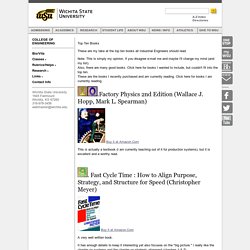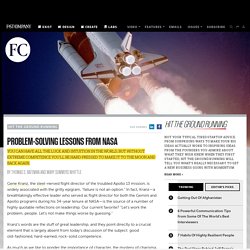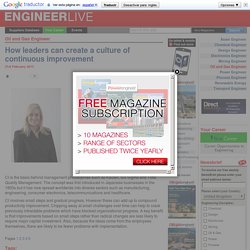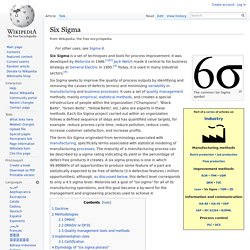

Mind Tools: Management Training and Leadership Training. Mark Graban's LeanBlog.org - a blog about Lean in hospitals, business, and our world. Jamie Flinchbaugh — on lean culture, transformational leadership, and entrepreneurial excellence. COLLEGE OF ENGINEERING - Wichita State University. Top Ten Books These are my take at the top ten books all Industrial Engineers should read.

Note: This is simply my opinion. If you disagree e-mail me and maybe I'll change my mind (and my list). Also, there are many good books. Click here for books I wanted to include, but couldn't fit into the top ten. .Factory Physics 2nd Edition (Wallace J. Buy it at Amazon.Com This is actually a textbook (I am currently teaching out of it for production systems), but it is excellent and a worthy read. . Buy it at Amazon.Com A very well written book. It has enough details to keep it interesting yet also focuses on the "big picture. " Improving Performance : How to Manage the White Space on the Organizational Chart (Geary A. Buy it at Amazon.Com A classic on how to really improve an enterprise. . Buy it at Amazon.Com THE book on reengineering, by the authors that started the rengineering revolution. .
Buy it at Amazon.Com THE book on management, should be taught in every curriculum. Problem-Solving Lessons From NASA. Gene Kranz, the steel-nerved flight director of the troubled Apollo 13 mission, is widely associated with the gritty epigram, "failure is not an option.

" In fact, Kranz—a breathtakingly effective leader who served as flight director for both the Gemini and Apollo programs during his 34-year tenure at NASA—is the source of a number of highly quotable reflections on leadership. Our current favorite? "Let's work the problem, people. Let’s not make things worse by guessing. " Kranz’s words are the stuff of great leadership, and they point directly to a crucial element that is largely absent from today’s discussion of the subject: good old-fashioned, hard-earned, rock-solid competence.
As much as we like to ponder the importance of character, the mystery of charisma, and the utility of relationships, the inescapable fact is that truly great leadership requires solving the biggest problems. CSSBB%20Insert. What Does a Continuous Improvement Engineer Do? How leaders can create a culture of continuous improvement. With five actions, leaders in the oil and gas industry can encourage small steps that add up to compound productivity improvement, says Lee Stannett.

Organisations looking for 'breakthrough' improvements often implement major change programmes, involving uncomfortably big steps and much physical, emotional and intellectual energy. Fortunately, there is an alternative. Creating incremental and cumulative improvements, over a period of time, is a different way of creating value for an organisation. It's more evolution than revolution and it's known as continuous improvement (CI).
CI is the basis behind management philosophies such as Kaizen, Six Sigma and Total Quality Management. Six Sigma. The common Six Sigma symbol Six Sigma is a set of techniques and tools for process improvement.

It was developed by Motorola in 1986.[1][2] Jack Welch made it central to his business strategy at General Electric in 1995.[3] Today, it is used in many industrial sectors.[4] Six Sigma seeks to improve the quality of process outputs by identifying and removing the causes of defects (errors) and minimizing variability in manufacturing and business processes. It uses a set of quality management methods, mainly empirical, statistical methods, and creates a special infrastructure of people within the organization ("Champions", "Black Belts", "Green Belts", "Yellow Belts", etc.) who are experts in these methods.
Each Six Sigma project carried out within an organization follows a defined sequence of steps and has quantified value targets, for example: reduce process cycle time, reduce pollution, reduce costs, increase customer satisfaction, and increase profits. Doctrine[edit] Methodologies[edit] LeanEngineeringWorkingPaper.pdf. Bosch-Rexroth-Applying-Lean-to-the-Engineering-Process.pdf.